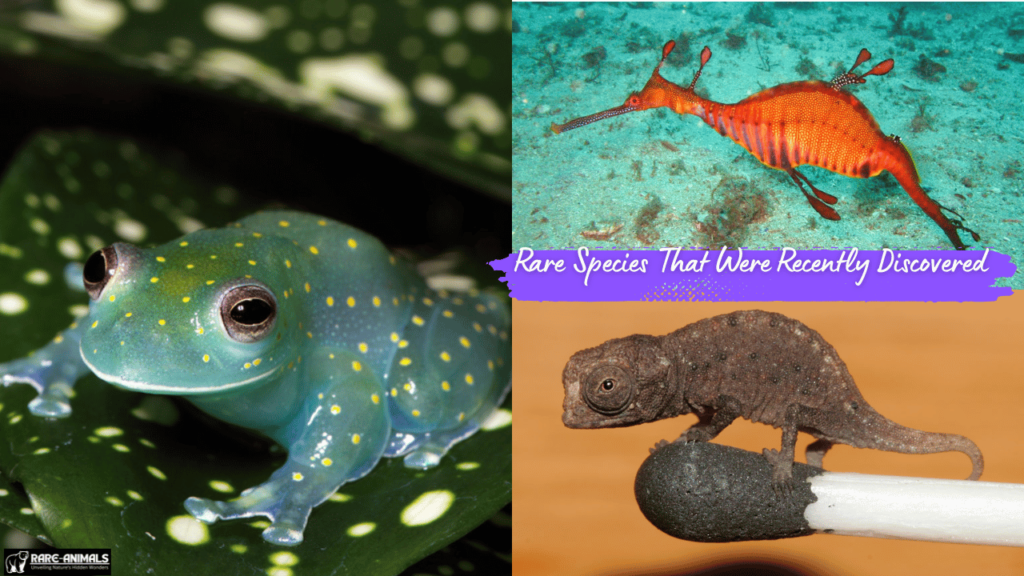Nature continues to surprise us with its boundless diversity. From hidden forests to the depths of the oceans, new species are still being discovered, offering fresh insights into the wonders of biodiversity.
This article explores some of the most remarkable rare species uncovered recently, highlighting their unique traits, habitats, and the importance of conservation efforts.
Why the Discovery of Rare Species Matters
The discovery of new species isn’t just exciting for scientists and nature enthusiasts; it carries profound implications for our understanding of ecosystems, evolution, and environmental health.
- Conservation insights: Identifying new species can alert us to fragile ecosystems that need protection.
- Scientific advancement: Studying rare species often uncovers unique biological traits, inspiring innovations in medicine, technology, and agriculture.
- Cultural significance: Many species play a critical role in local traditions and livelihoods, reinforcing the importance of their preservation.
Recent Rare Species Discoveries
1. The “Glass Frog” with Transparent Skin
- Scientific Name: Hyalinobatrachium yaku
- Habitat: Ecuadorian Amazon Rainforest
- Key Features:
- Transparent skin reveals internal organs.
- Unique vocalization patterns for communication.
- Conservation Status: Threatened by deforestation and habitat fragmentation.
Why it’s significant: Glass frogs are bioindicators, meaning their health reflects the broader state of the ecosystem. Protecting them safeguards numerous other species.
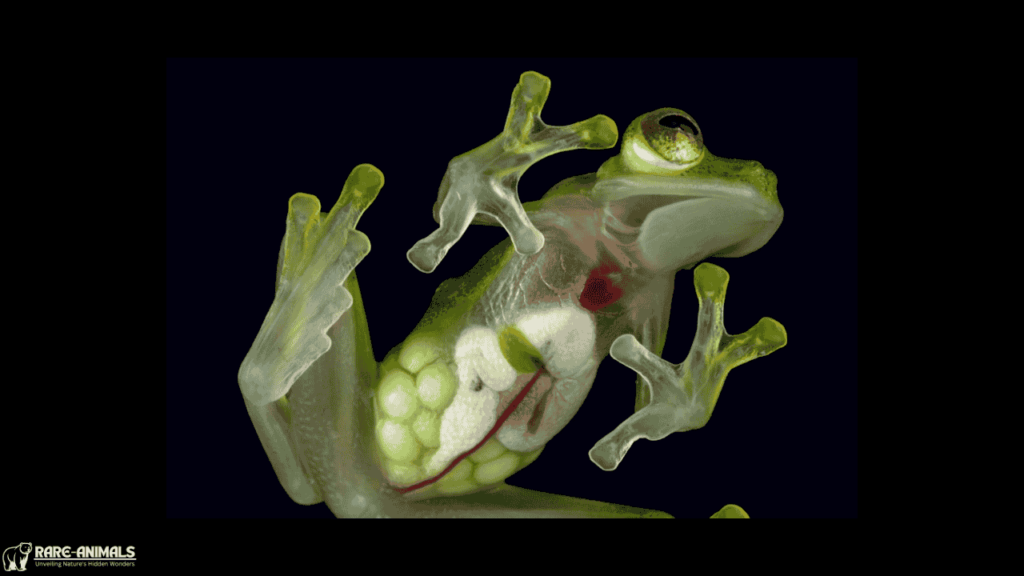
2. The “Ruby Seadragon” of Australia’s Waters
- Scientific Name: Phyllopteryx dewysea
- Habitat: Coastal waters of Western Australia
- Key Features:
- Bright red coloration for camouflage in deep water.
- Related to seahorses, with males carrying eggs.
- Conservation Status: Vulnerable due to climate change and overfishing.
Why it’s significant: Its discovery highlights the unexplored biodiversity of marine environments, urging stronger protections for underwater ecosystems.
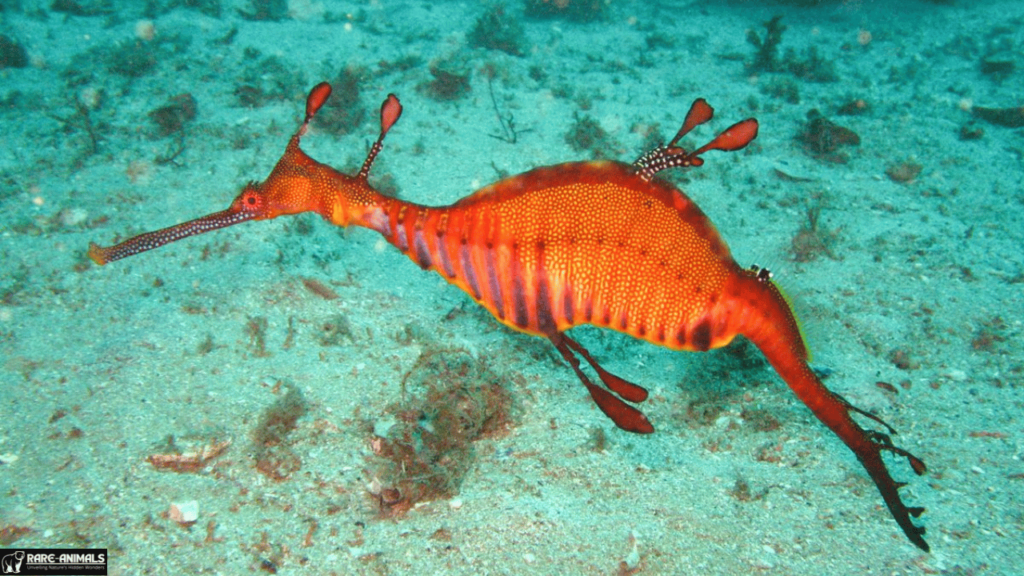
3. A “Miniature Chameleon” from Madagascar
- Scientific Name: Brookesia nana
- Habitat: Montane rainforests of Madagascar
- Key Features:
- Among the smallest reptiles, just 1 inch long.
- Prefers leaf litter for camouflage.
- Conservation Status: Critically endangered, threatened by habitat destruction.
Why it’s significant: This tiny chameleon underscores the richness of Madagascar’s unique wildlife, much of which is found nowhere else on Earth.
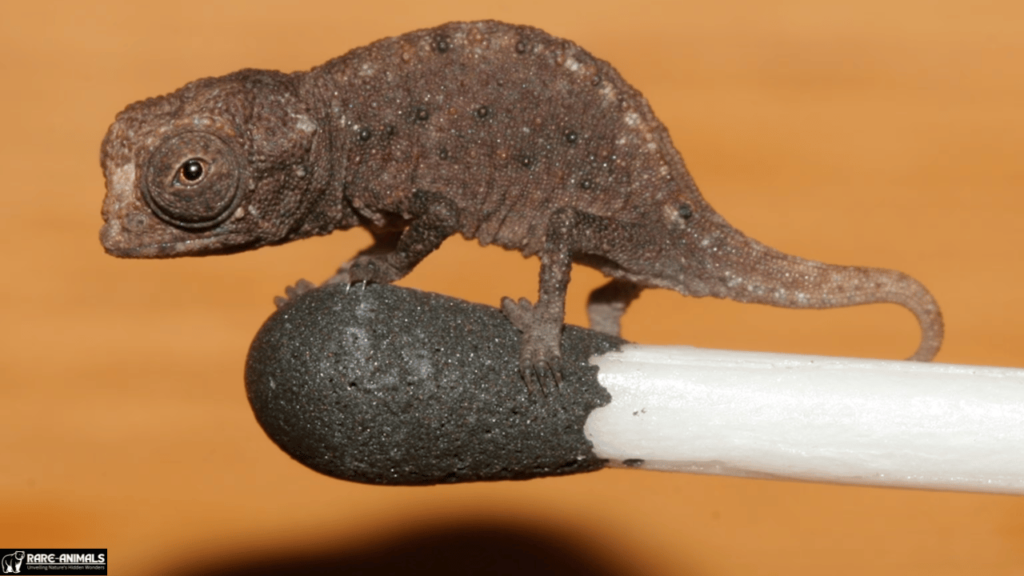
Conservation Challenges and Solutions
Challenges
- Habitat Loss: Deforestation, urbanization, and agricultural expansion are the primary threats to newly discovered species.
- Climate Change: Rising temperatures and changing precipitation patterns disrupt delicate ecosystems.
- Overexploitation: Illegal wildlife trade and overharvesting of resources often target rare species.
Solutions
- Protected Areas: Expanding national parks and reserves to safeguard critical habitats.
- Community Involvement: Encouraging local participation in conservation efforts to create sustainable practices.
- Legislation: Strengthening laws to combat poaching and habitat destruction.
- Scientific Research: Investing in ecological studies to better understand and protect rare species.
How Are New Species Discovered?
Methods Used by Scientists
- Field Surveys:
- Exploring remote regions to identify undocumented flora and fauna.
- Genetic Analysis:
- Using DNA sequencing to distinguish new species from known ones.
- Citizen Science:
- Engaging the public in spotting and documenting rare wildlife.
Technological Innovations
- Drones: Mapping inaccessible habitats.
- AI Algorithms: Analyzing large datasets to identify patterns.
- Underwater Robots: Exploring deep-sea ecosystems.
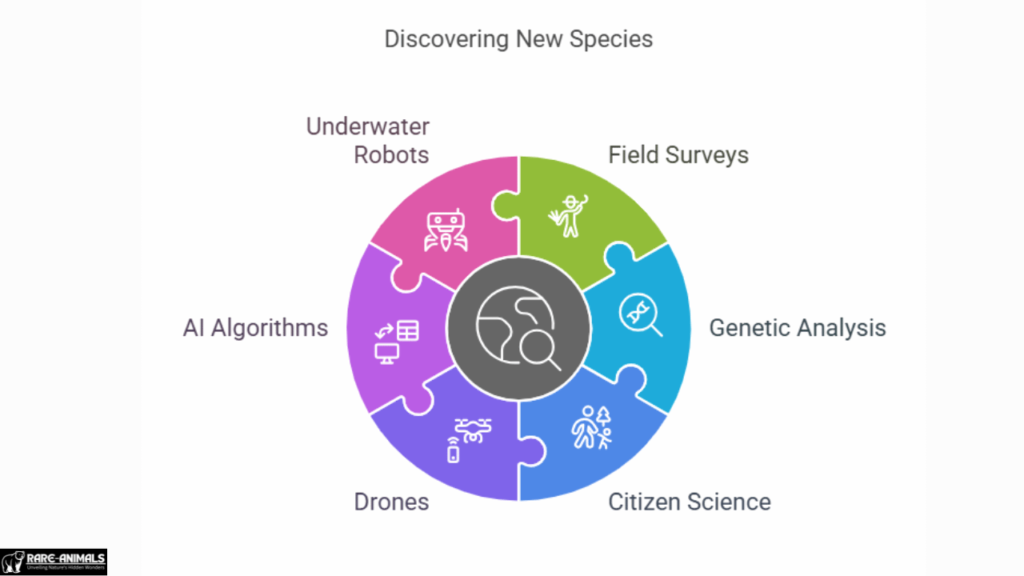
FAQs
1. Why are rare species important to biodiversity?
Rare species contribute to the overall health and resilience of ecosystems, often playing unique roles in maintaining ecological balance.
2. How many new species are discovered each year?
Scientists discover approximately 15,000–20,000 new species annually, highlighting the vast unknown diversity of life.
3. What can I do to help protect rare species?
Support conservation organizations.
Practice eco-friendly habits, such as reducing waste and avoiding products that harm wildlife.
Stay informed and spread awareness.
4. Which regions are most likely to yield new species?
Biodiversity hotspots like the Amazon Rainforest, Coral Triangle, and Madagascar are rich sources of undiscovered species.
5. Are all rare species endangered?
Not necessarily. While many rare species face threats, others may thrive in niche habitats with limited distribution.
Conclusion
Recent discoveries of rare species remind us of nature’s incredible diversity and the urgency to protect it. From the transparent beauty of the glass frog to the minute charm of the Brookesia nana, each species enriches our understanding of the natural world.
By supporting conservation efforts, we can ensure these wonders are preserved for future generations to marvel at.

Alveena is an experienced content writer with a knack for crafting engaging and insightful pieces. She thrives on breaking down complex ideas and presenting them as clear, captivating content that resonates with readers.

